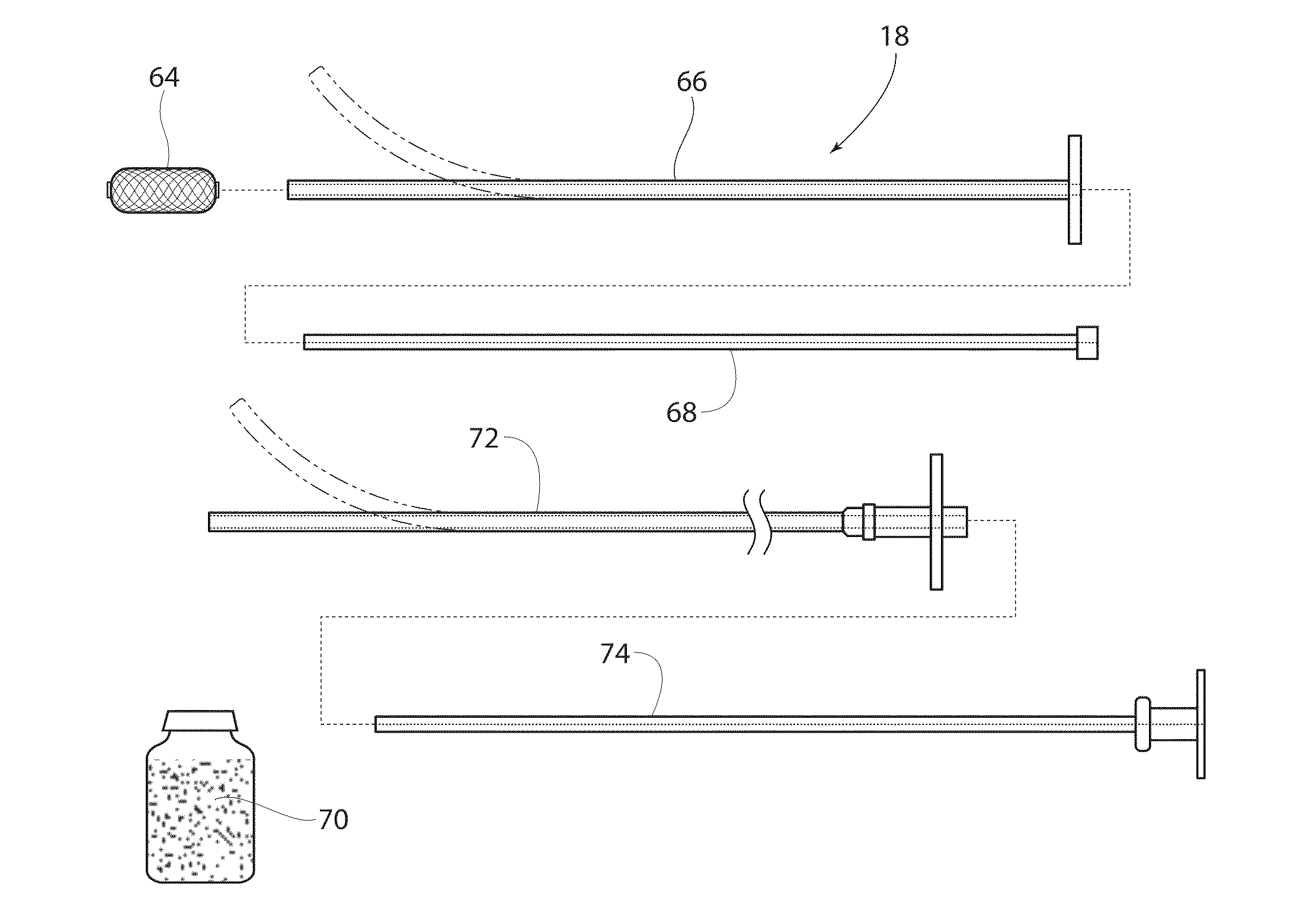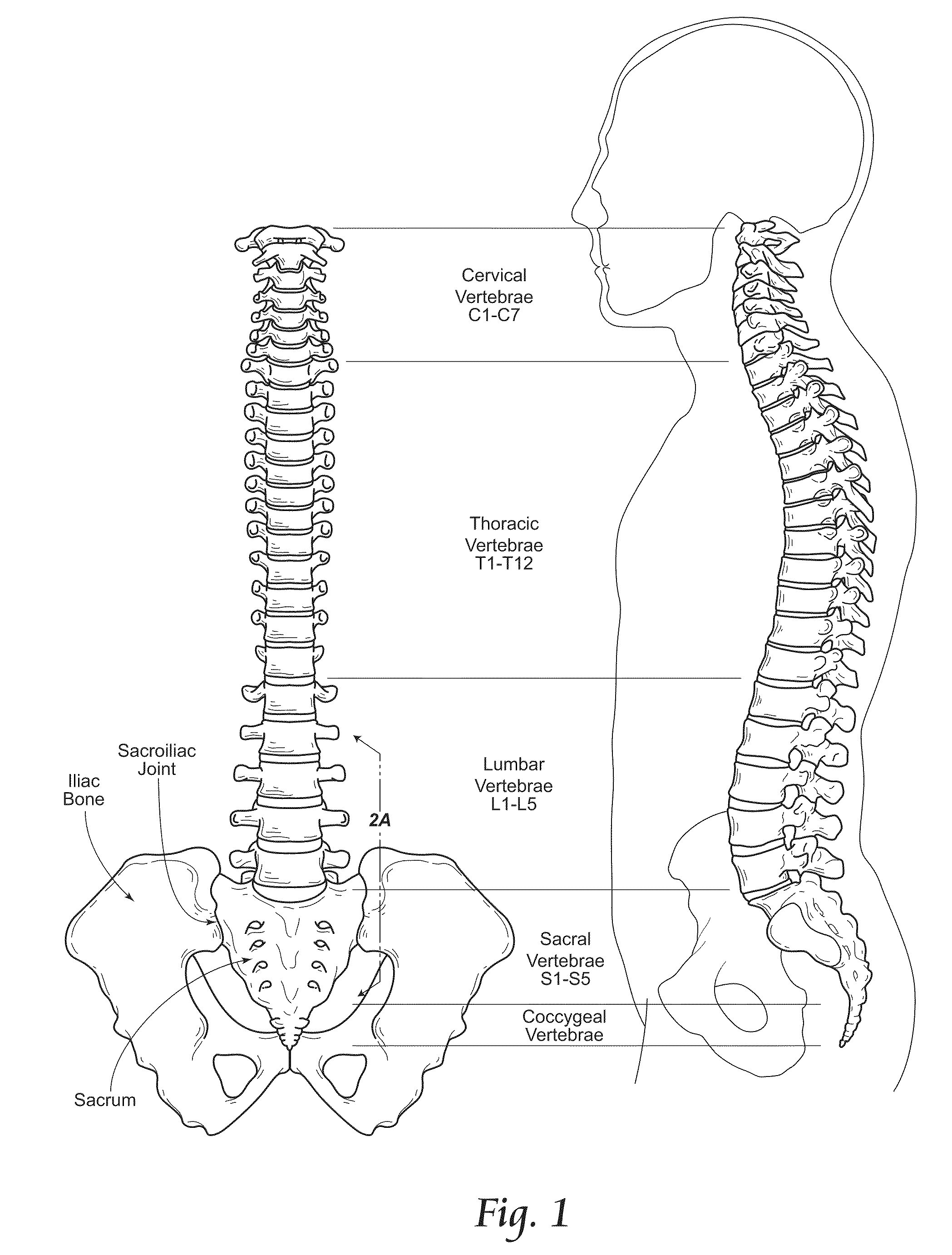Minimally invasive systems, devices, and surgical methods for performing arthrodesis in the spine
a technology applied in the field of minimally invasive systems and surgical methods for performing arthrodesis in the spine, can solve the problems of enlargement of joints, cartilage thinning or disappearing, and facial joints quite commonly simply wear out or degenerate in many patients
- Summary
- Abstract
- Description
- Claims
- Application Information
AI Technical Summary
Problems solved by technology
Method used
Image
Examples
Embodiment Construction
[0056]Although the disclosure hereof is detailed and exact to enable those skilled in the art to practice the invention, the physical embodiments herein disclosed merely exemplify the invention, which may be embodied in other specific structure. While the preferred embodiment has been described, the details may be changed without departing from the invention, which is defined by the claims. While the present invention pertains to systems, devices, and surgical techniques applicable at virtually all spinal levels, the invention is well suited for achieving fusion at the S1-L5-L4 spinal level. It should be appreciated, however, the systems, device, and methods so described are not limited in their application to lumbar fusion and are applicable for use in treating different types of spinal problems.
I. Anatomy of Lumbar and Sacral Vertebrae
[0057]FIG. 2A shows the S1 sacral vertebra and the adjacent fourth and fifth lumbar vertebrae L4 and L5, respectively, in a lateral view (while in a...
PUM
 Login to View More
Login to View More Abstract
Description
Claims
Application Information
 Login to View More
Login to View More - R&D
- Intellectual Property
- Life Sciences
- Materials
- Tech Scout
- Unparalleled Data Quality
- Higher Quality Content
- 60% Fewer Hallucinations
Browse by: Latest US Patents, China's latest patents, Technical Efficacy Thesaurus, Application Domain, Technology Topic, Popular Technical Reports.
© 2025 PatSnap. All rights reserved.Legal|Privacy policy|Modern Slavery Act Transparency Statement|Sitemap|About US| Contact US: help@patsnap.com



